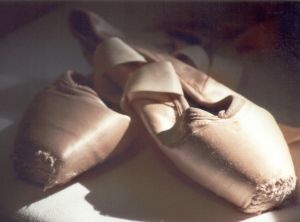 Dancers have some of the most enviable bodies, with their long and lithe limbs, their sculpted muscles and amazing strength. In fact, ballet and other dance forms have been the inspiration for many workouts, including the Tracy Anderson method, Pure Barre and Kettlenetics.
Dancers have some of the most enviable bodies, with their long and lithe limbs, their sculpted muscles and amazing strength. In fact, ballet and other dance forms have been the inspiration for many workouts, including the Tracy Anderson method, Pure Barre and Kettlenetics.
But just like any well-trained athlete, dancers’ bodies are challenged by working the same muscle groups with the same set of moves over and over again. Whether it’s cramming 10 toes in pointe shoes or sore knees from gliding across the stage in a series of split jumps, dancers’ bodies wear the marks and signs of their beautiful craft on their bodies – and sometimes those reflections are painful.
But the ancient practice of yoga can offer the dancer a way to correct any imbalances or misalignments, while also improving their performance.
Here is what you need to know about yoga for dancers:
Benefits
One of the many reasons dancers flock to yoga classes is that the postures in yoga mirror the same fluid and graceful movements that dancers perform every time they grasp the ballet barre or step onto the floor of their dance studio. Yoga also offers numerous anatomical benefits to dancers. While dancers have amazing extension in their legs, their hip flexor muscles, hamstrings, and shoulders are often tight. Yoga’s ability to stretch these areas can improve and strengthen them.
In addition, yoga’s breath work helps dancers utilize his or her breath while performing in a way that enhances their physical dexterity, while also keeping their mind clear, steady, and focused.
Poses
Just as their are endless dance moves, there are also innumerable yoga postures that can support a dancer’s performance. Here are just a few:
Sun Salutation B (Surya Namaskar B): Because of the flowing movements of the series of postures that are linked with breath in Sun Salutation B, it makes this posture a practice in and of itself for the dancer. Plus, the lunges help loosen tight hip flexor muscles, and the powerful engagement of the core abdominal muscles encourage the dancer to connect with the central axis of their body. For beginners, start by performing five rounds of Sun Salutation B and work your way up to 10 or more a day.
Bound-Angle Pose (Baddha Konasana): Not all areas of the dancer’s body are limber and bendy. The four muscles of the hip, including the abductors, adductors, flexors and extensors, are often quite stiff due to all the jumping and leg extensions. Bound-Angle Pose is a wonderful yoga posture for opening up these areas and loosening them. For the beginner, start by staying the posture for at least five breaths, gradually working your way to 10 or more. Focus on reaching out through your knees as you release the thigh bones towards the floor.
Cautions
If you have an injury, it’s always important to speak with your doctor before starting a yoga practice. In addition, seek out a qualified yoga instructor who has worked with dancers before or who has a sound knowledge of yoga and its implications for performing artists.
Since the dancer may be used to being quite accomplished at his or her craft, it is important to realize that many yoga postures may be challenging to perform, yet it is within this challenge that the fun, exploration and understanding of yoga can grow and develop. Therefore, the dancer should go into a yoga class with no preconceived expectations of how they feel they should perform. Instead, they should view it as a mini vacation away from the dance studio and as a way to deepen their sense of self and their beloved art form.

